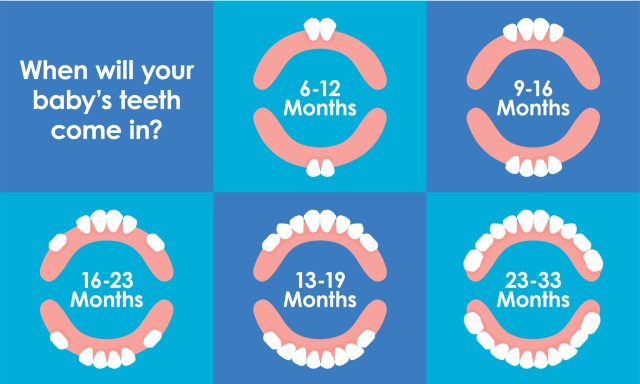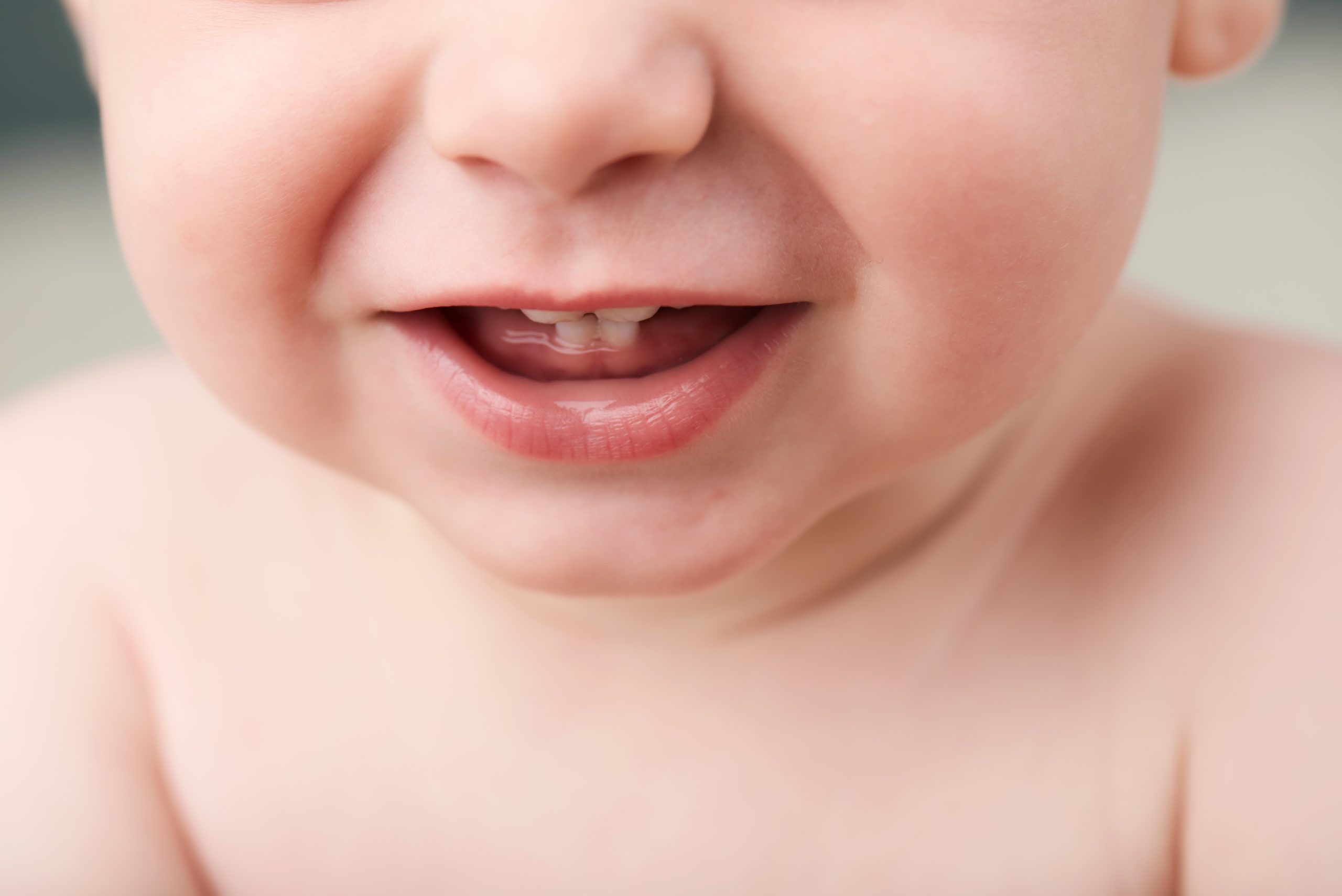There are many exciting milestones during a baby’s first year. We may be biased but seeing that first baby tooth is at the top of the list. Some babies might be briefly unhappy through the process of growing teeth. If you know when you can expect teething to happen, though, you can be prepared with ways to comfort your baby.
What is teething?
When your baby’s teeth first emerge through their gums this is what’s known as “teething” or “cutting teeth.”
Every baby is different, and the timing of when babies get their teeth can vary. Some babies may not have any by their first birthday. Some cut their teeth as early as four months old. However, most babies start teething around six months. Teething lasts until the baby is about 25 to 33 months old.
How do you know if your baby has begun to cut their teeth? The five common signs of babies when they are teething include:
- Sore, red gums around the emerging tooth
- Increased drooling, irritability, and crying
- Changes in sleeping patterns
- Increased gnawing or chewing on objects
- Flushed cheeks with a low-grade fever (temperature less than 100.4 degrees F)
What is the order of teething in babies?
While timing varies, baby teeth appear in a fairly predictable order. Typically, the first to erupt are the lower central incisors (bottom front teeth). As your child grows, more teeth should appear. And they usually appear in pairs. By the time they’re three years old, most children will have all 20 of their primary teeth. Below is a baby teeth chart so you know which tooth is which.

Baby Teeth Development Chart
When your baby’s teeth start to come through, you can start brushing their teeth! While there really isn’t much to do at this stage, it’s important to add this to their daily routine. Of course, so is scheduling their first Little Smiles dental visit! Learn more about when your child should first visit a pediatric dentist.

